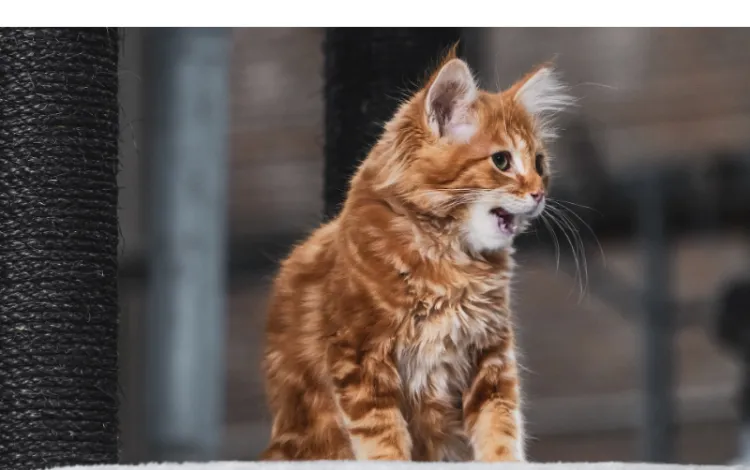Hey there, fellow cat lovers! You’ve come to the right place if you’re wondering how to train a Persian cat.
These fluffy felines, known for their luxurious coats and sweet faces, can be wonderful companions. But are Persian cats easy to train? The answer is: with the right approach, absolutely!
In this comprehensive guide, we’ll go through everything you need to know about training your Persian cat, from understanding their unique personality traits to teaching them basic commands.
So, let’s jump right in and start your journey to a well-behaved Persian kitty!
Fun Fact #1: Did you know that Persian cats have been around for centuries? They were first brought to Europe from Persia (now Iran) in the 1600s.
Understanding Your Persian Cat’s Personality
Before we dive into the training techniques, it’s important to understand the unique personality traits of Persian cats. These felines are known for their gentle and laid-back nature, making them great companions for families and individuals alike.
Persian cats are typically affectionate and enjoy spending time with their favorite humans. They may not be as active or curious as other breeds, but they still love playing and engaging with you.
It’s worth noting that, like humans, each Persian cat has its own personality. Some may be more outgoing and playful, while others could be shyer or more independent.
As you embark on your training journey, take the time to observe your cat’s behavior and preferences. This understanding will help you tailor your training methods to suit your feline friend best.
Fun Fact #2: The adorable flat face of Persian cats is called a "brachycephalic" facial structure, which makes them stand out from other cat breeds.
Setting Up a Comfortable Environment for Training
To set the stage for successful training, creating a comfortable environment that meets your Persian cat’s needs is essential. Here are some tips on how to do just that:
Creating a Safe Space
Persian cats, like all cats, need a safe space where they can retreat when they feel stressed or overwhelmed. Provide a cozy hideaway in a quiet corner of your home, like a covered bed or a cardboard box.
This will give your cat a sense of security, making them more relaxed and receptive to training.
Designating a Play Area
Having a designated play area is also crucial when training your Persian cat. Cats are more likely to learn and engage with you if they associate a specific area with fun and positive experiences.
Choose a space in your home that is free of distractions and has plenty of room for your cat to move around. Make sure to keep some of your cat’s favorite toys and treats in this area to encourage active participation in training sessions.
Essential Training Techniques for Persian Cats
Training your Persian cat will be a breeze if you know the right techniques. Some tried-and-true methods will help you and your feline friend bond while learning together.
Clicker Training
Clicker training is a popular method for teaching cats new behaviors using positive reinforcement. The clicker is a small device that makes a distinct sound when pressed.
You’ll use this sound to mark the exact moment your cat performs a desired behavior, followed by a treat or praise.
Positive Reinforcement
Always use positive reinforcement when training your Persian cat. This means rewarding them with treats, praise, or affection whenever they perform a desired behavior.
Positive reinforcement helps your cat associate the behavior with good outcomes, making them more likely to repeat it in the future.
Consistency and Patience
Patience and consistency are key when training any cat, including Persians. Stick to a regular training schedule and use the same commands and rewards for each behavior you’re teaching.
Remember, it takes time for your cat to learn new skills, so be patient and don’t expect instant results. Celebrate small victories and progress along the way!
Teaching Your Persian Cat Basic Commands
Training your Persian cat to follow basic commands is a great way to strengthen your bond and keep their mind sharp. Here are some fundamental commands to get started:
Sit
Teaching your cat to sit can be useful for various situations, such as when you’re preparing their food or when you need them to be calm.
Use a treat to lure your cat into a sitting position by holding it just above its head and slowly moving it back toward its tail. As soon as they sit, click your clicker (if using) and reward them with the treat and praise.
Stay
“Stay” is a helpful command to keep your cat in one place when necessary. Begin by having your cat in a sitting position. Hold your hand, palm facing outwards, in front of their face, and say “Stay.”
Wait a few seconds, then reward them with a treat and praise. Gradually increase the duration and distance between you and your cat during training sessions.
Come
Teaching your cat to come when called is essential for their safety and makes it easier to manage them at home. Start by saying your cat’s name, followed by the command “come,” and use a treat or toy to lure them towards you.
Reward them with a treat or toy and praise them when they reach you. Practice this command in different rooms and situations to help your cat generalize the behavior.
High-Five
A high-five is a fun trick that can entertain guests and strengthen your bond with your Persian cat. With your cat in a sitting position, hold a treat in your hand and show it to them.
As they reach out to touch your hand with their paw, say “high-five” and reward them with the treat and praise.
Litter Box Training for Persian Cats
Proper litter box habits are essential for a harmonious life with your Persian cat. Here’s how to ensure your cat knows where to do their business:
Choosing the Right Litter Box
Selecting the right litter box for your Persian cat is crucial for successful litter box training. Consider the size of your cat and choose a box with high sides to prevent litter from being kicked out.
Some cats prefer a covered litter box for added privacy, while others feel more comfortable with an open one. You may need to experiment to find the perfect fit for your cat.
Establishing a Litter Box Routine
To help your Persian cat develop good litter box habits, follow these steps:
- Place the litter box in a quiet, easily accessible area of your home, away from their food and water.
- Introduce your cat to the litter box by placing them inside and allowing them to sniff and explore.
- Keep the litter box clean by scooping waste daily and changing the litter as needed. A clean litter box is more appealing to cats and encourages them to use it consistently.
- Praise your cat and offer a small treat when you catch them using the litter box. This will reinforce the behavior and help them associate the litter box with positive experiences.
Preventing Unwanted Behaviors
As a Persian cat owner, addressing and preventing unwanted behaviors early on is essential to maintain a peaceful household. Here are some common issues and how to tackle them:
Scratching Furniture
Scratching is a natural behavior for cats, but it can wreak havoc on your furniture. To deter your Persian cat from scratching your belongings, provide them with a variety of scratching posts or pads.
Make sure to place them near the areas where your cat tends to scratch. Praise and reward your cat when they use the designated scratching surfaces.
Biting
Cats may bite for various reasons, such as play, fear, or aggression. To discourage biting, avoid using your hands as toys during playtime. Instead, provide interactive toys like wand toys or feather teasers.
If your cat bites during petting or handling, calmly withdraw your attention and give them a brief “time out” to show that biting leads to an end of enjoyable interactions.
Excessive Meowing
Persian cats are generally quiet, but some may meow excessively due to stress, hunger, or seeking attention. Determine the cause of your cat’s vocalizations and address any underlying issues.
Avoid responding immediately if your cat is meowing for attention, as this may reinforce the behavior. Instead, wait for a pause in the meowing and then engage with your cat.
Socializing Your Persian Cat
Socializing your Persian cat is essential to their development, as it helps them become well-adjusted and confident in various situations. Here’s how to effectively socialize with your feline friend:
- Start early: The critical period for socialization in cats is between 3 and 14 weeks of age. If you have a kitten, begin socializing them as early as possible. However, it’s never too late to work on socialization with older cats; it might just require more patience and time.
- Introduce new experiences gradually: Expose your Persian cat to various sights, sounds, and experiences in a controlled and calm manner. This could include meeting new people, encountering other pets, and experiencing different household noises.
- Use positive reinforcement: Reward your cat with treats, praise, or affection when they react calmly or positively to new experiences. This will help them associate these encounters with positive outcomes and become more comfortable over time.
- Monitor their stress levels: Pay attention to your cat’s body language and behavior during socialization sessions. If they show signs of stress or fear, give them a break and try again later.
Keeping Your Persian Cat Mentally Stimulated
Mental stimulation is vital for your Persian cat’s overall well-being and happiness. Here are some ways to keep their minds sharp and engaged:
- Interactive play: Regularly engage in interactive play with your cat using toys like wand teasers, laser pointers, or even a simple crumpled ball of paper. This strengthens your bond and helps them exercise their hunting instincts.
- Puzzle toys and treat dispensers: Provide your cat with puzzle toys or treat-dispensing toys that challenge them to think and problem-solve. These toys stimulate their brains and offer a reward for their efforts, keeping them engaged and entertained.
- Rotation of toys: Rotate your cat’s toys every few weeks to prevent boredom. Introducing new or “forgotten” toys keeps things fresh and exciting for your feline friend.
- Training sessions: Training sessions are not only for teaching commands but also serve as an excellent source of mental stimulation. Use the training techniques we discussed earlier to keep your cat’s mind sharp and reinforce good behaviors.
Conclusion: Embrace the Journey of Training Your Persian Cat
Training and caring for your Persian cat can be an incredibly rewarding experience.
Understanding their unique personality traits, creating a comfortable environment, and using effective training techniques will set the stage for a strong and lasting bond with your feline companion.
Remember, patience, consistency, and love are the keys to success. Enjoy the journey, and cherish the memories you’ll create with your furry friend!









![why-maine-coon-follow-me-everywhere]](https://www.howtoanimal.com/wp-content/uploads/2023/04/Featured_Image_why-maine-coon-follow-me-everywhere.webp)
